Mã thông báo phiên là một phần dữ liệu (một UUID) được dùng trong các lệnh gọi REST để xác định một phiên – một chuỗi các hoạt động trao đổi thông báo có liên quan. Bạn phải thêm mã thông báo phiên vào tất cả các yêu cầu đối với Ô 2D và hình ảnh Chế độ xem đường phố.
Bạn đưa mã này vào làm giá trị của một tham số session được thêm vào tất cả các URL yêu cầu.
Trong Map Tiles API, mã thông báo phiên đại diện cho một tập hợp các lựa chọn hiển thị được xác định. Điều này có nghĩa là bạn không phải truyền một bộ lựa chọn hiển thị với mỗi yêu cầu về ô. Bạn có thể sử dụng cùng một mã thông báo phiên trên nhiều ứng dụng.
Mã thông báo phiên hiện có hiệu lực trong 2 tuần kể từ thời điểm phát hành, nhưng điều này có thể thay đổi. Bạn có thể kiểm tra thời gian hết hạn của mã thông báo phiên bất cứ lúc nào bằng cách xem trường expiry trong thông báo phản hồi.
Yêu cầu mã thông báo phiên
Để yêu cầu mã thông báo phiên, hãy gửi yêu cầu HTTPS POST đến điểm cuối createSession, như trong ví dụ sau. Bạn phải gửi yêu cầu kèm theo tiêu đề Content-Type: application/json.
curl -X POST -d '{ "mapType": "streetview", "language": "en-US", "region": "US" }' \ -H 'Content-Type: application/json' \ "https://tile.googleapis.com/v1/createSession?key=YOUR_API_KEY"
Các trường bắt buộc
mapTypeLoại bản đồ cơ sở. Giá trị này có thể là một trong những giá trị sau:
roadmap- Các ô bản đồ được vẽ tiêu chuẩn của Google Maps.
satellite- Hình ảnh vệ tinh.
terrain- Hình ảnh địa hình. Khi chọn
terrainlàm loại bản đồ, bạn cũng phải thêm loại lớplayerRoadmap(được mô tả trong phần Trường không bắt buộc). streetview- Ảnh toàn cảnh trong Chế độ xem đường phố. Để biết thêm thông tin, hãy xem phần Thẻ thông tin Chế độ xem đường phố.
languageThẻ ngôn ngữ IETF chỉ định ngôn ngữ dùng để hiển thị thông tin trên các ô. Ví dụ:
en-USchỉ định ngôn ngữ tiếng Anh được sử dụng ở Hoa Kỳ.regionMã nhận dạng khu vực Kho lưu trữ dữ liệu theo ngôn ngữ và khu vực chung (gồm 2 chữ cái viết hoa) đại diện cho vị trí thực tế của người dùng. Ví dụ:
US.
Trường tuỳ chọn
imageFormat- Chỉ định định dạng tệp cần trả về. Các giá trị hợp lệ là
jpeghoặcpng. Tệp JPEG không hỗ trợ độ trong suốt, do đó, bạn không nên dùng tệp này cho các ô lớp phủ. Nếu bạn không chỉ địnhimageFormat, thì định dạng phù hợp nhất cho ô sẽ được chọn tự động. scaleTăng kích thước của các phần tử trên bản đồ (chẳng hạn như nhãn đường), đồng thời vẫn giữ nguyên kích thước ô và vùng phủ sóng của ô mặc định. Việc tăng tỷ lệ cũng làm giảm số lượng nhãn trên bản đồ, giúp giảm tình trạng lộn xộn. Các giá trị sau đây là giá trị
scalehợp lệ:scaleFactor1x: Mặc định.scaleFactor2x: Tăng gấp đôi kích thước nhãn và xoá nhãn đối với các đối tượng nhỏ.scaleFactor4x: Tăng gấp 4 lần kích thước nhãn và xoá các nhãn đối tượng nhỏ.
Các ví dụ sau đây minh hoạ hiệu ứng của việc điều chỉnh tỷ lệ các phần tử trên bản đồ.
| Hệ số tỷ lệ 1x | Hệ số tỷ lệ 2x |
|---|---|
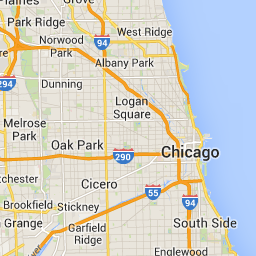 |
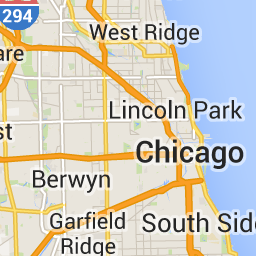 |
highDpi- Chỉ định xem có trả về các ô có độ phân giải cao hay không. Nếu hệ số tỷ lệ tăng lên,
highDpisẽ được dùng để tăng kích thước của ô. Thông thường, việc tăng hệ số tỷ lệ sẽ phóng to ô kết quả thành một hình ảnh có cùng kích thước, làm giảm chất lượng. VớihighDpi, kích thước kết quả cũng tăng lên, giữ nguyên chất lượng. DPI là viết tắt của Dots per Inch (Số điểm trên mỗi inch) và High DPI (DPI cao) có nghĩa là ô kết xuất bằng cách sử dụng nhiều điểm trên mỗi inch hơn bình thường. Nếutrue, thì số lượng pixel trong mỗi chiều x và y sẽ được nhân với hệ số tỷ lệ (tức là 2x hoặc 4x). Phạm vi phủ sóng của ô vẫn không thay đổi. Tham số này chỉ hoạt động với các giá trịscalelà 2x hoặc 4x. Chế độ này không ảnh hưởng đến các ô có tỷ lệ 1x.
| Hệ số tỷ lệ 1x | Hệ số tỷ lệ 2x DPI cao |
|---|---|
 |
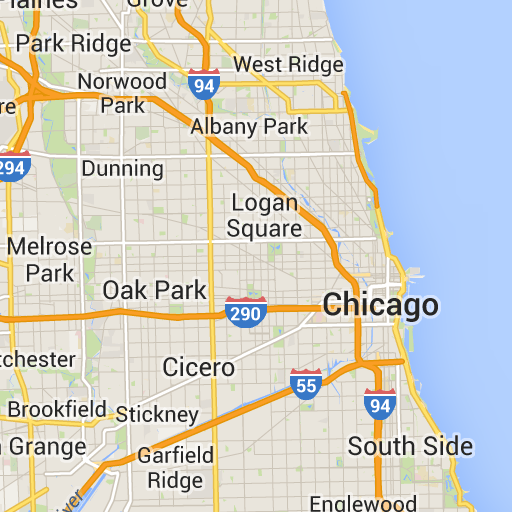 |
layerTypesMột mảng các giá trị chỉ định các loại lớp được thêm vào bản đồ. Các giá trị hợp lệ là:
layerRoadmap- Bắt buộc nếu bạn chỉ định
terrainlàm loại bản đồ. Cũng có thể tùy chọn phủ lên loại bản đồsatellite. Không ảnh hưởng đến các ô trên lộ trình. layerStreetview- Hiển thị các đường phố và vị trí được hỗ trợ Chế độ xem phố bằng đường viền màu xanh lam trên bản đồ.
layerTraffic- Hiển thị tình trạng giao thông hiện tại.
stylesMột mảng các đối tượng kiểu JSON chỉ định giao diện và mức độ chi tiết của các đối tượng trên bản đồ, chẳng hạn như đường, công viên và khu vực đô thị. Bạn có thể dùng tính năng tạo kiểu để tuỳ chỉnh bản đồ cơ sở tiêu chuẩn của Google. Tham số
styleschỉ hợp lệ nếu loại bản đồ làroadmap. Để biết cú pháp đầy đủ về kiểu, hãy xem Tài liệu tham khảo về kiểu.overlayGiá trị boolean chỉ định xem
layerTypescó được kết xuất dưới dạng một lớp phủ riêng biệt hay kết hợp với hình ảnh cơ sở. Khitrue, bản đồ cơ sở sẽ không xuất hiện. Nếu bạn chưa xác định bất kỳlayerTypesnào, thì giá trị này sẽ bị bỏ qua.
Ví dụ: yêu cầu loại bản đồ satellite có lớp layerRoadmap và overlay được đặt thành false sẽ tạo ra các ô tương đương với loại bản đồ hybrid được dùng trong Maps JavaScript API (hình ảnh bên trái). Cùng một loại bản đồ và lớp có overlay được đặt thành true sẽ tạo ra một ô trong suốt có lớp phủ bản đồ, được tạo kiểu phù hợp để phủ lên hình ảnh vệ tinh (hình ảnh bên phải).
overlay: false |
overlay: true |
|---|---|
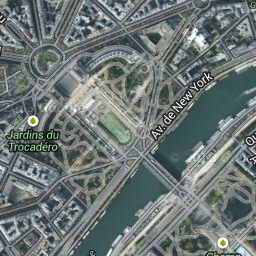 |
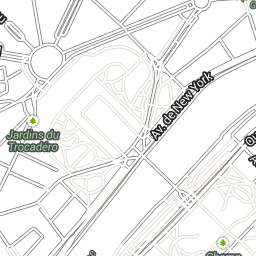 |
JSON sau đây là ví dụ về một nội dung yêu cầu thông thường chứa cả các trường bắt buộc và không bắt buộc.
{
"mapType": "satellite",
"language": "en-US",
"region": "us",
"layerTypes": [ "layerRoadmap", "layerStreetview" ],
"overlay": true,
"scale": "scaleFactor1x",
"styles": [
{
"stylers": [
{ "hue": "#00ffe6" },
{ "saturation": -20 }
]
},{
"featureType": "road",
"elementType": "geometry",
"stylers": [
{ "lightness": 100 },
{ "visibility": "simplified" }
]
}
]
}
Ví dụ này cung cấp một lớp phủ phù hợp để kết hợp với hình ảnh vệ tinh. Ví dụ này chứa cả lớp phủ chế độ xem đường phố và lộ trình. Bản đồ kết quả được hiển thị bằng tên và dữ liệu bằng tiếng Anh, như được nói ở Hoa Kỳ.
Phản hồi mã thông báo phiên
JSON sau đây là một ví dụ về nội dung phản hồi.
{
"session": "IgAAAHGU9jnAU4KOAfwY3Bcd6eH_WxQsyocSBAdUnAr9pnvTTNXtF9c_27RBo94ytEXTDg",
"expiry": "1361828036",
"tileWidth": 256,
"tileHeight": 256,
"imageFormat": "png"
}
Danh sách sau đây chứa định nghĩa về các trường trong nội dung phản hồi.
session- Giá trị mã thông báo phiên mà bạn phải thêm vào tất cả các yêu cầu Map Tiles API.
expiry- Một chuỗi chứa thời gian (tính bằng giây kể từ thời gian bắt đầu hệ thống) mà mã thông báo hết hạn. Mã thông báo phiên có hiệu lực trong 2 tuần kể từ thời điểm tạo, nhưng chính sách này có thể thay đổi mà không cần thông báo.
tileWidth- Chiều rộng của các ô được đo bằng pixel.
tileHeight- Chiều cao của các ô, tính bằng pixel.
imageFormat- Định dạng hình ảnh, có thể là
pnghoặcjpeg.

